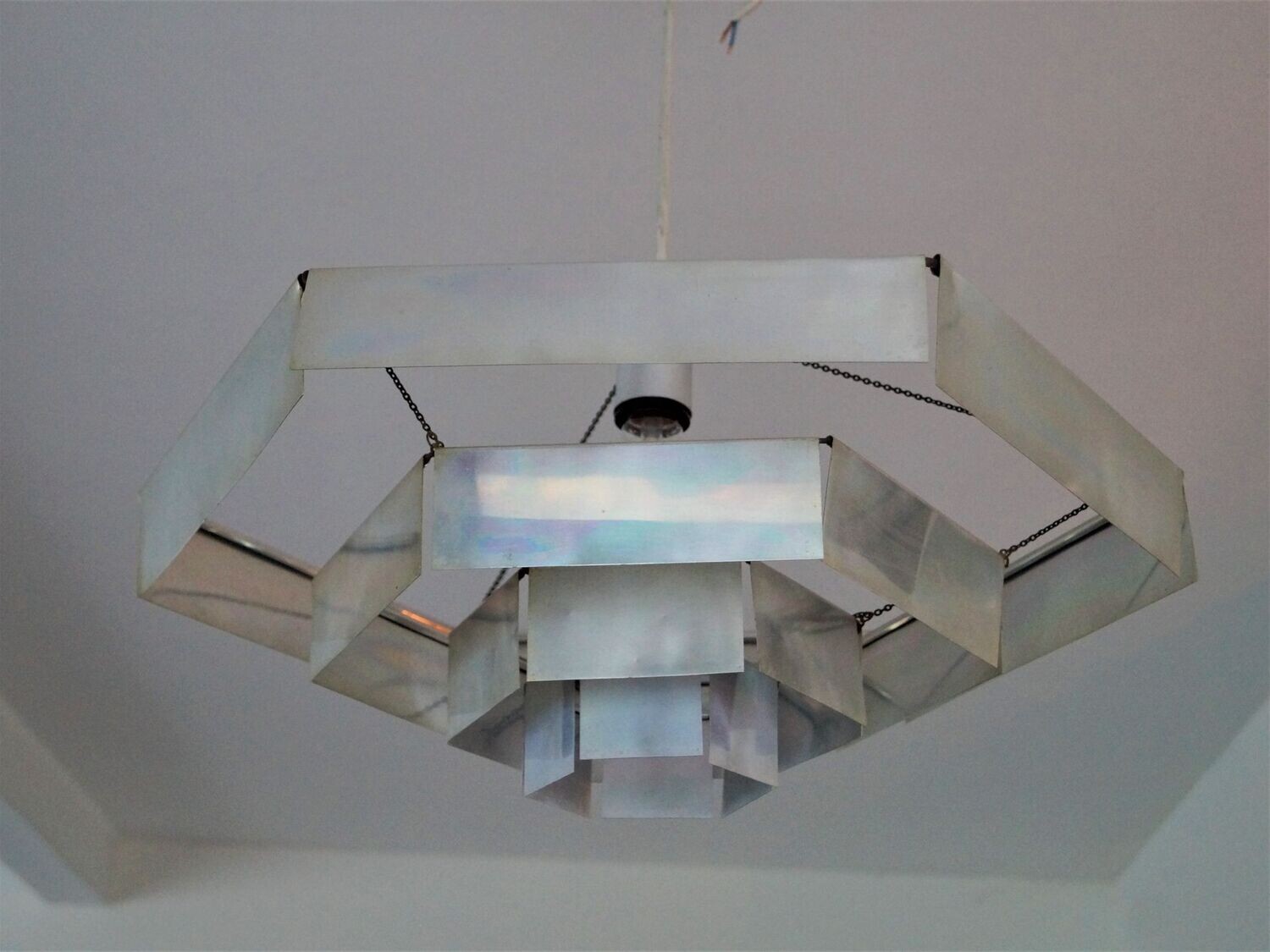Bruno Munari Pendant Light for Danese Milano, Italy, 1959
€ 0,00
Sold out
Sold out
Product Details
Iconic ''Lampada Esagonale'' (translation: hexagonal lamp) from the early 1960s. A rare pendant or suspension lamp consisting of concentric hexagonal rings of reflective aluminium slats. The light from the bulb is reflected by the slats in several directions, which allows for an even illumination.
The piece is in good condition, with minor wear on the aluminium. The thin metal chains from which the lamp is suspended are patinated but still in good working order and complete. The ceiling suspension misses the aluminium cylinder.
Bruno Munari is one of the most famous Italian designers of the 20th century. Praised for being a master of visual language, he was described by Picasso as "the Leonardo of our times"; his contribution to design is immeasurable.
Munari was born in 1907 in Milan. After spending his formative years in Venice, he returned to Milan and began working for his engineer uncle in 1925. In the late 1920s he joined the Second Futurism, led by F.T. Marinetti. He abandoned the group as they got increasingly associated with fascism. although the dynamic aesthetics of Futurism continued to inspire his work for many years. Munari would later meet André Berton in Paris in the 1930s and Surrealism would have a lifelong impact on him.
From 1938 to 1943, Miunari worked as a graphic designer for the Italian publishing house Mondadori, and during these years, Munari began writing and illustrating children's books. As an advocate of kinesthetic learning, his stories are often left incomplete in order to teach children to use their imaginations and think individually.
With more than sixty publications, from design manuals to children's books, Munari uses experimental typography, pedagogical designs, bold color palettes, and an eclectic choice of materials to express his ideas about language and the world. In 1966 his influential book Design as Art chronicled the importance of design in everyday life, as well as the democratization of art and design.
In the 1940s Munari, together with Gilo Dorfles, Gianni Monnet, and Atanasio Soldait, founded the artistic movement of Concretism in Italy, inspired by abstractionism.
Munari's Useless Machines series, created during his career, represents a whimsical exploration of childlike wonder and frankness. These kinetic and furniture-like sculptures achieved widespread popularity in the 1950s and 1960s. Munari also designs products for the home, ranging from electronic systems to children's toys, including Meo the Cat (1949) and Zizì the Monkey (1954) for Pirelli; as well as Cube Ashtray (1957), Falkland Pendant Light (1964), and Flexy Sculpture (1968) for Danese. As well as this hexagonal chandelier.
Documentation: Industrial Art: Objects, Play and Thought in Danese Production, Casciani, ppg. 142-143.
| Design Period | 1959 |
|---|---|
| Production Period | |
| Country of Manufacture | Italy |
| Style | Vintage, Minimalist, Modernist |
| Detailed Condition | Very Good — This vintage/antique item has no defects, but it may show slight traces of use. |
| Restoration and Damage Details | Light wear consistent with age and use. Ceiling suspension might not be original but from 60s (not a cylinder like some pieces from the same period have)
|
| Plug Type | European Plug (up to 250V) |
| Product Code | 0061 |
| Materials | Aluminium, metal chains |
| Color | Silver |
| Width | 54 cm |
| Depth | 45 cm |
| Height | 25 cm |
Save this product for later
Display prices in:
EUR


